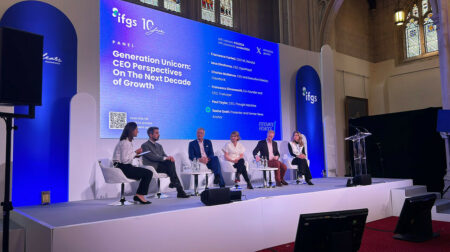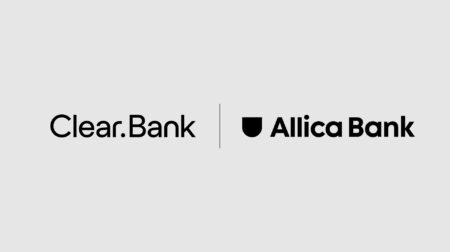ClearBank Hackathon: Generative AI Part 1

AI is the future of business. Or the end of all humanity.
The truth is we don’t know, even if the latter idea has been deeply ingrained through the cultural association of a robotic apocalypse or a metallic killer sent from the future. While I’ll leave future state predictions to those better placed to make them it is apparent that no business can afford to ignore the rise of AI, whether that’s Generative AI and Large Language Models (LLMs) or new capabilities being embedded into the tools they have come to rely on.
ClearBank has no immediate plans to put AI at the heart of its offering. But we certainly can’t ignore the impact it could have and want to ensure we’re prepared for every eventuality. So, what better way to understand its potential than a hackathon to really get under the proverbial (for now!) skin of the technology.
That’s exactly what we did last month bringing together technologists from across the business. It’s the first of many hackathons that will give us the chance to engage with our colleagues across the business, get creative outside of day-to-day roles and test the limits of what’s possible.
ClearBank is a significant user of Microsoft products and services and with its investment into OpenAI, we have an opportunity to leverage the commercial scale of OpenAI and Azure, specifically, the GPT-4 models.
We’ve set out on a mission to complete a 3-month hack series to discover the potential benefits of this technology in our bank. The aim is to go through technology, business discovery, and governance processes and, to avoid becoming too generic, focus on two key areas where we believe it could deliver bank-wide operational efficiencies
- Business challenges – covering functions including HR, Risk, Operations and Legal.
- Payment challenges – including whether it could improve straight through processing (STP) rates, enhance categorisation.
Naturally, with such a nascent technology we had to ensure that security and data protection were sufficient before any work began. We’ve engaged with Microsoft to ensure that all data is retained by ClearBank, does not leave our environment and controls and is not used for further training of the AI.
The hackathon series will continue to test and validate areas where AI could benefit ClearBank and will work through the various security concerns that may exist with this technology.
Our first hackathon project was a HR assistant. We began with a problem statement and internal feedback that finding and understanding expense policies was time consuming.
The options are limited, either you trawl through internal repositories, such as SharePoint, hoping to stumble on the answer, which could be hidden deep within a multilayered folder structure, then at the bottom of a 60-page PDF, or you disturb a team member hoping they have the information to memory.
Many providers, including Microsoft, provide chatbot functionality today to try and overcome this problem. However, these chatbots are prescriptive, meaning the bot creator must map what question might be asked and provide the answer. To do this for every potential query against internal documents in not feasible.
We created a Microsoft chatbot using Power platform and Azure OpenAI GPT-4. Rather than a simple search/retrieve query such as ‘expense policy’, this would be a more contextual chatbot you question – for example “Can I claim for taxis?” and receive the correct answer.
Initially we believed it would take the form of building a Power Virtual Agent chatbot, use Power Automate Flow to take the question from the chatbot and ask it to ChatGPT. However, we quickly realised that if we used Azure Cognitive Search, we could add ClearBank’s internal policy documents, and Azure Cognitive Search would index them.
From there it provided a website with chat functionality, where we could ask, for example, “Does ClearBank have an internal expense policy?” Azure Cognitive Search would find the information, pass that to ChatGPT that would provide the answer. We could then ask additional questions via ChatGPT and the conversation was remembered.
We questioned a chatbot about our internal expense policy based on a 15-page PDF saved in a SharePoint folder and discovered:
- It was quick to set up, taking less than 2 days for a working model where the user would query using ChatGPT, which got the answers from Azure Cognitive Search to then provide answers about ClearBank's internal policies.
- Building the Power Virtual Agent and Power Automate Flow was simple and efficient being drag and drop, point and click.
- The chatbot was easy to use and intuitive - we asked it multiple questions about the policy, as well as asking questions in English and Romanian.
- Responses were incredibly accurate in both languages.
- Using Azure Cognitive Search took away all the heavy lifting. It simply required running some predefined scripts created by Microsoft to get this working.
We learned an immense amount about Key infrastructure, the API sets available, the limitations of data sets and introduction of our own data leveraging other Azure services. A team will continue to investigate the use case and ensure it could scale – for example by adding more internal data and documents in Azure Cognitive Seach to further test and validate the accuracy of the results.
However, this first project has already shown the potential of generative AI with use case, making search in SharePoint or Google look archaic in comparison. It also successfully integrated ClearBank and OpenAI in a demo environment, with a straightforward path to putting it into production.
“I’ll be back” with more insights from our other Generative AI hackathons to share with the tech community over the coming months.


